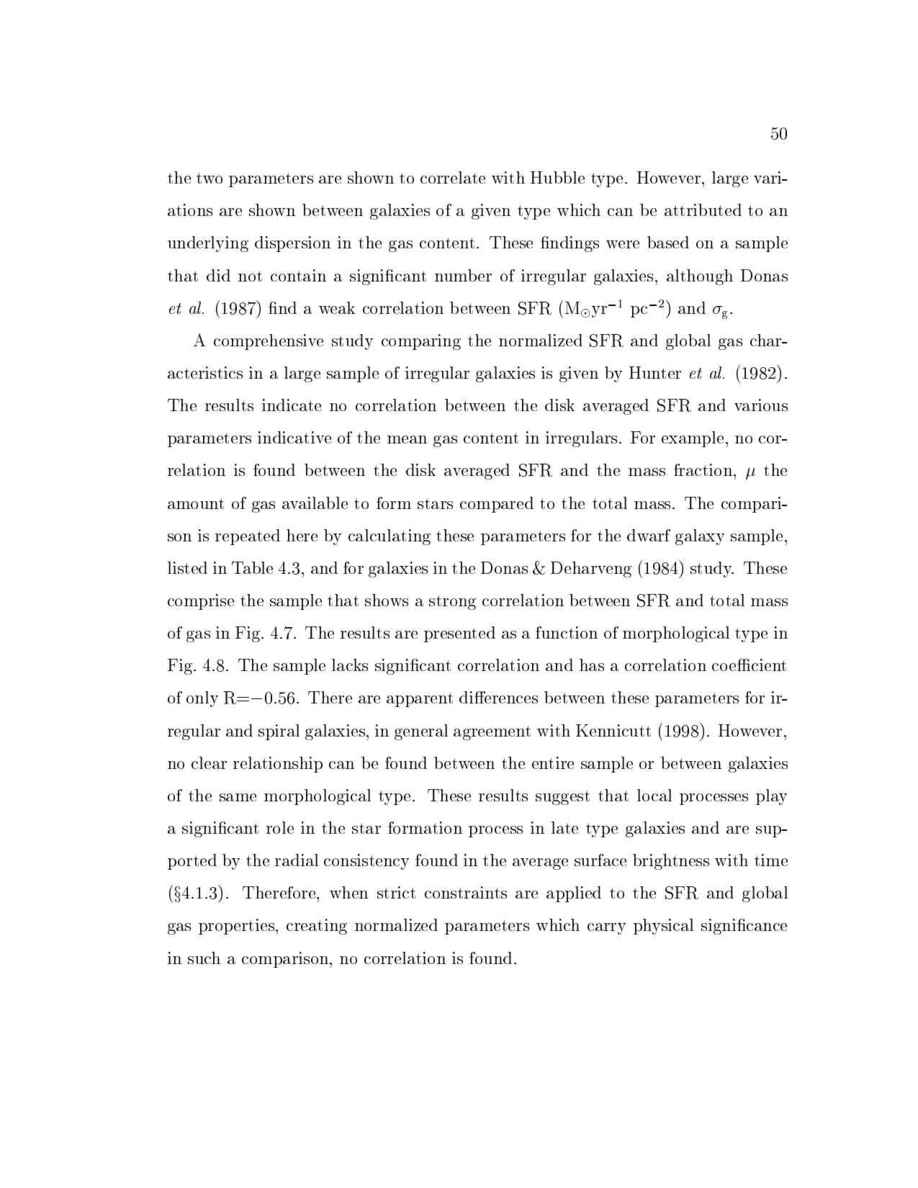
50
the two parameters are shown to correlate with Hubble type. However, large vari-
ations are shown between galaxies of a given type which can be attributed to an
underlying dispersion in the gas content. These ndings were based on a sample
that did not contain a signi cant number of irregular galaxies, although Donas
et
al.
1987 nd a weak correlation between SFR M yr
,1
pc
,2
and
g
.
A comprehensive study comparing the normalized SFR and global gas char-
acteristics in a large sample of irregular galaxies is given by Hunter
et
al.
1982.
The results indicate no correlation between the disk averaged SFR and various
parameters indicative of the mean gas content in irregulars. For example, no cor-
relation is found between the disk averaged SFR and the mass fraction,
the
amount of gas available to form stars compared to the total mass. The compari-
son is repeated here by calculating these parameters for the dwarf galaxy sample,
listed in Table 4.3, and for galaxies in the Donas & Deharveng 1984 study. These
comprise the sample that shows a strong correlation between SFR and total mass
of gas in Fig. 4.7. The results are presented as a function of morphological type in
Fig. 4.8. The sample lacks signi cant correlation and has a correlation coe cient
of only R=
,
0
:
56. There are apparent di erences between these parameters for ir-
regular and spiral galaxies, in general agreement with Kennicutt 1998. However,
no clear relationship can be found between the entire sample or between galaxies
of the same morphological type. These results suggest that local processes play
a signi cant role in the star formation process in late type galaxies and are sup-
ported by the radial consistency found in the average surface brightness with time
x
4.1.3. Therefore, when strict constraints are applied to the SFR and global
gas properties, creating normalized parameters which carry physical signi cance
in such a comparison, no correlation is found.
